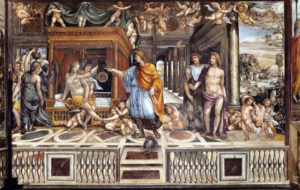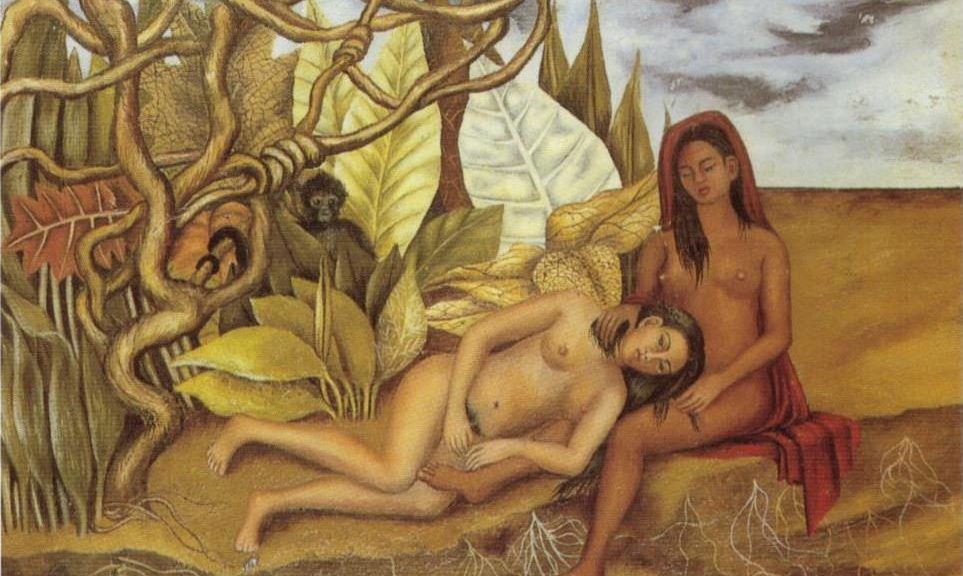Il Sodoma (1477-1549)
Giovanni Bazzi, also known as Il Sodoma. (A mocking name aimed at Bazzi’s homosexuality that Bazzi later began to embrace) was a painter of the Italian renaissance, born in Savoy, Italy. He was influenced by the prior works of Leonardo Da Vinci and Raphael in his historical, mythical, and religious frescoes.
Featured Artwork: Marriage of Alexander the Great and Roxana (1571)

Where can I find this artwork?: Fresco at Villa Farnesina in Rome
Significance to Queer Art History: Alexander the Great is featured in the middle, gazing at his soon to be wife, Roxana as she is undressed by cupids for their consummation of marriage. Meanwhile, on the right, a clothed Hephaestion (Alexander’s best man) leans upon the marriage god, Hymen. Hephaestion was a general in Alexander’s army along with being his intimate partner and personal body guard. The two were inseparable throughout life. This fresco by Il Sodoma, exemplifies Alexander the Great’s bisexuality through Hephaestion’s closeness to the marriage god. While not married by law, Alexander and Hephaestion’s closeness during the marriage of Roxana and Alexander remains.
Resources & further reading:
The Editors of Encyclopædia Britannica. “Il Sodoma.” Encyclopædia Britannica. March 31, 2017. Accessed August 2017. https://www.britannica.com/biography/Il-Sodoma.
Saslow, James M. Pictures and Passions: A History of Homosexuality in the Visual Arts. New York, NY: Viking, 2000. 97-99.










